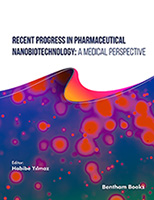Introduction
Bioencapsulation (or microencapsulation) of cells and their implantation into a body of immunoprotected cells allows researchers to revive a missing or defective function in the cells. Microencapsulated cells have reached the clinic where they have been shown to be safe and efficacious in numerous clinical trials. Cell types that have been encapsulated for therapeutic purposes include hybridomas, islet cells, "platform" cell lines e.g. HEK293 and CHO cells as well as an increasing focus on the encapsulation of stem cells. This e-book explains the different methods used for achieving cell bioencapsulation based on different polymers e.g. alginate, cellulose sulphate and agarose. Other chapters in this book subsequently describe the use of cell encapsulation in cancer therapy to improve on existing chemotherapies by reducing doses and thus side effects while increasing efficacy for long term in vivo production of (i) tumoricidal or virus neutralising antibodies, (ii) insulin to achieve a self regulating treatment for diabetes and (iii) neuron nurturing factors to treat CNS diseases such as epilepsy, disorders like Parkinson's disease, Alzheimer, Amyotrophic lateral sclerosis, Huntington's disease and pathologies caused by trauma and/or ischemic processes. The book also includes a chapter reviewing the genetic engineering of cells to allow controlled production of biotherapeutics from encapsulated cells.
This is a unique and timely book which brings together contributions from some of the leading researchers in the field of cell encapsulation. Interested readers are provided an overview of the exciting developments and clinical experiences of researchers with cell bioencapsulation.





